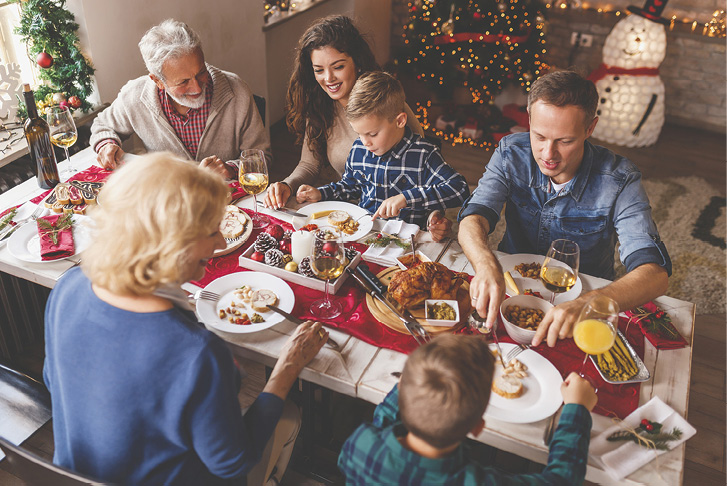The winter season heralds the return of holidays, each with their own unique origins and traditions, and yet sharing common themes: gathering with loved ones, giving gifts, and eating together. Chock-full of cultural and family expectations, these holiday meals can be challenging, especially for people with eating patterns that differ from what may be considered “normal.”
Different By Choice and Necessity
Some people opt for a diet that’s different from their cultural or familial norms. For instance, in the U.S., where most people eat meat, about 4 percent of the population identify as vegetarian, and 1 percent categorize themselves as vegan. In Canada, almost 8 percent are vegetarian and 4.6 percent are vegan. Some people’s food choices may be different because they choose to avoid refined flours or sugars, refrain from drinking alcohol, or elect to follow a specific diet regime.
But for other people, the way they eat is less a matter of preference and more about necessity dictated by medical conditions. For example, allergies, intolerances, kidney disease, gout, and celiac disease all limit the foods that someone can safely eat. Certain medications, when combined with common foods or drinks, may result in dangerous interactions, making it necessary for the people that take those medicines to be careful about what they consume. Neurodiversities, such as autism and sensory processing issues, can impact someone’s food choices and mealtime needs. Foods that taste or feel wonderful to one person can cause misery for another person who processes sensory input in a different way.
Setting the Table for Success
Some people love big, boisterous gatherings, rousing conversations, and tables loaded with a wide variety of foods. Others prefer quiet, intimate celebrations with a limited menu. What can we do to make holiday meals enjoyable for everyone, while honoring people’s varying preferences, needs, abilities, and boundaries?
- Normalize differences and assume that others are doing the best they can. Everyone has their own likes and dislikes, and any one person’s wants and needs are not the baseline against which others should be judged. Labeling someone as “picky” or “demanding” assumes that they are trying to be difficult.
- Go into gatherings with an understanding of what would be helpful. As the host, you can help pave the way with a brief call, text, or email inquiring about your guests’ needs. Especially where children are concerned, The Family Dinner Project suggests that it’s helpful to know: what challenges might come up; how the child might behave due to those challenges; and how the other adults can help.
- Develop your own game plan and let others know about it. As a guest, you can offer to bring a dish to share that fits your dietary needs, or bring a plate of “safe” food from home. As the host, you can keep individual food restrictions in mind when planning the menu, and welcome guests’ offers to contribute food for sharing or to provide food for themselves.
- Create “scripts” that support healthy boundaries around food discussions. When things get chaotic, it can be hard to know how to respond. If you’re anticipating sensitive discussions, plan in advance responses that support your needs. Here are some to get you started:
- We all have foods we like and dislike. I don’t really like ____. What’s something that you don’t like?
- My food choices (or weight, health, etc.) aren’t something that I want to discuss.
- I’m going to need help preparing food and cleaning up after the meal. What could you contribute?
- No, thank you. I’ve had enough.
- I’ll bring a dish to share that works for my food needs.
- I’d rather not talk about diets. How’s your ___ (work, school, hobby, etc.) going?
- Mind your own business. Outside of a caregiver/child relationship, other people’s food choices aren’t really anyone else’s concern. Keep the food on the table, and the judgments and comments about someone’s eating habits off it.
What Matters Most?
Unfortunately, it’s not uncommon for Person A to make what they think is a simple food choice for themselves, only for Person B to take that decision as a signal of personal rejection. In these instances, maintaining relationships requires us to peel back a layer and ask ourselves, what truly matters most: what’s on a person’s plate or our relationship with that person?

